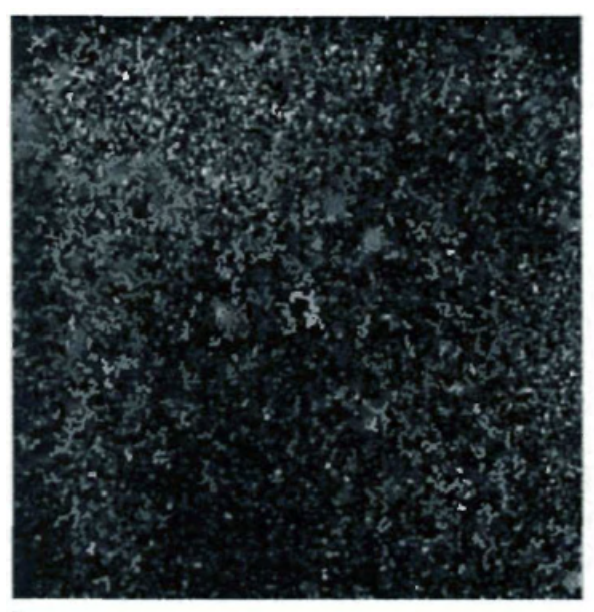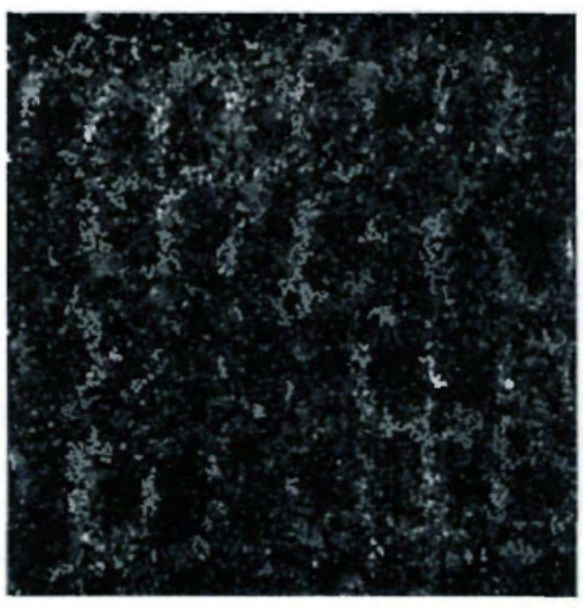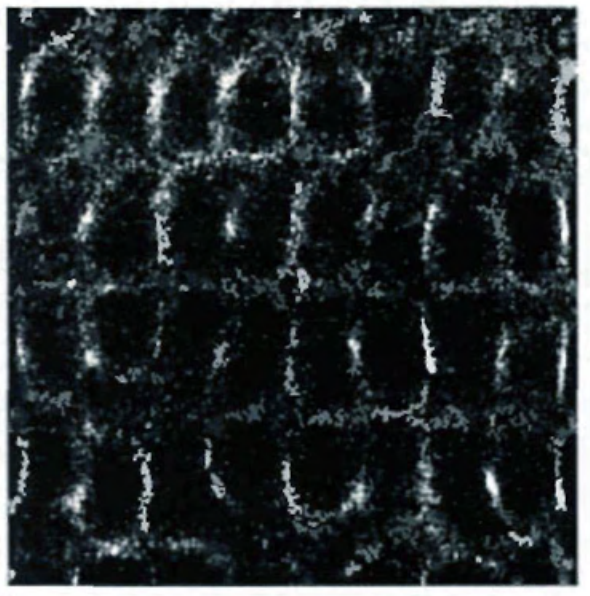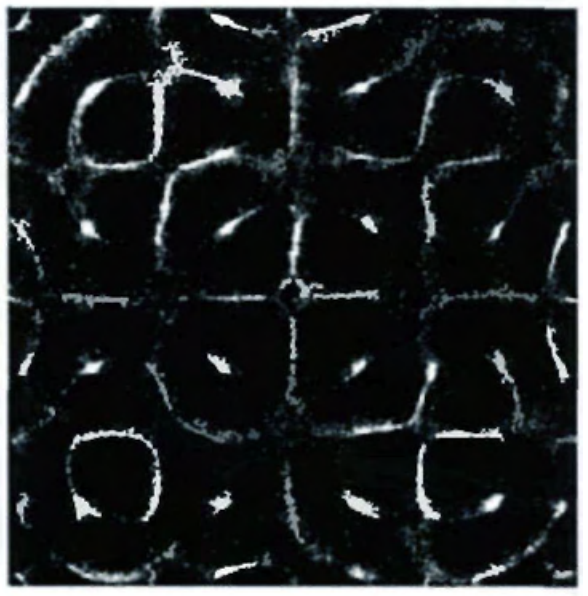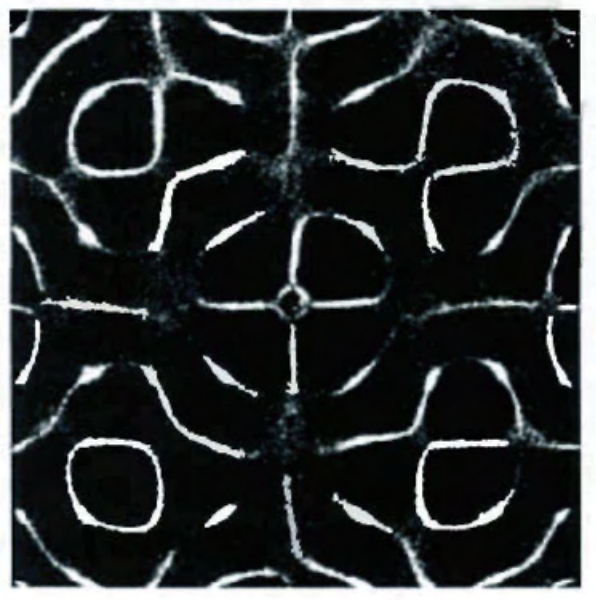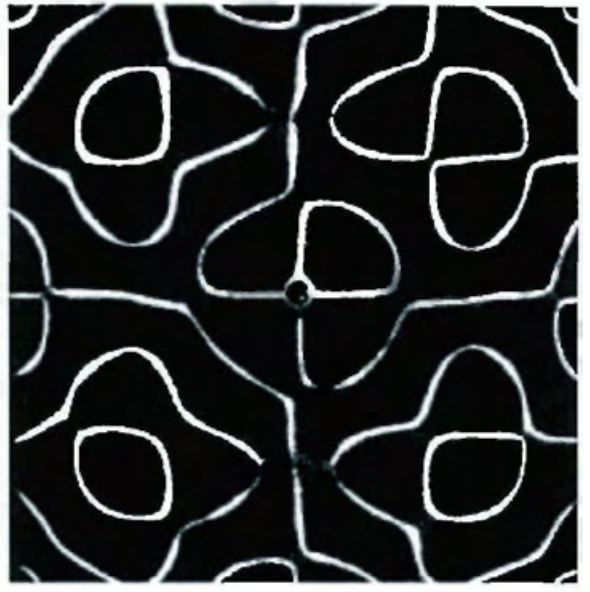Explore Cymatics: The curious art of sound made visible.
Matters pertaining to waves.
Cymatics, from ancient Greek: κῦμα
Noun (physics) The study of visible effects of sound and vibration.
It felt essential and meaningful to me to begin to comprehend that everything, in essence, behaves the same way; everything leaves a pattern behind, forming shapes that are influenced by all its surroundings, in this case, vibrations, namely sound.
I had a vague idea of the concept of vibrations made visible but didn’t know its name. I came across it researching patterns as inspiration for the school’s graphics. Dr. Hans Jenny was the first name I registered. Then, after scanning his book, I came to know the father of acoustics, too, Ernst Chladni and Mary D. Waller, who recreated and illustrated Chladni Figures and took his work to a higher level.
Then I made the connection with Dr. Masaru Emoto and recalled his water crystal experiments through positive and negative sounds projected onto the water. Intricate snowflake figures would form on the plated, frozen water through positive vibes, love, and prayer, and none would develop through aggression or negativity. This story greatly impacted my thinking and helped me correlate my thoughts and actions while reminding me to always strive to emanate light energy.
From William Henry Stone (1879) Elementary Lessons on Sound, via Wikipedia.
“Chladni realized that sand sprinkled on the top of the plate would be pushed away from the vibrating regions and settle into these nodes, allowing the node patterns to be seen. […] Chladni excited these resonant vibrations by drawing a violin bow across its edge, as shown right.”
Cymatics: A Study of Wave Phenomena & Vibration by Dr. Hans Jenny
———
Fragments from Christiaan Stuten's foreword, as his friend and assistant, on Dr. Hans Jenny:
“As a youngster, his affinity for music and skill at the piano made a career in music seem likely. His father held various positions in the evangelical church, and throughout grammar school, Hans would play the organ for church services. His tastes, however, were as broad as his talents and he was equally at ease improvising jazz as performing a piano sonata. His musical aptitude overshadowed an indifference for church religion, although he did gain a thorough knowledge of the bible during this time.
He was a tireless observer of the natural world, especially animals. In later life, as a scientist and lecturer, his travels took him all over the world, and he never missed an opportunity to visit zoological gardens, whether in his hometown of Basel, Switzerland or in some distant city. He loved to travel and had an insatiable desire to really "know" the places he would visit.
Jenny liked to quote an aphorism of Heraclitus, "'All is flow. All is in flux." More than a favorite maxim, this was a very apt and pointed characterization of the man himself.
Much like the Cymatics experiments brought to light underlying principles of nature, Jenny's indefatigable spirit of inquiry, and unparalleled powers of perception revealed his ardent desire to know, to understand, to feel, and be at one with the very essence of life, a force which he felt deep within.”
Events do not take place in a continuous sequence or in a straight line but are in a continual state of constant vibration, oscillation, undulation, and pulsation.
Watch cymatic figures unfold by Nigel John Stanford
Text and images sourced from the book Cymatics: A Study of Wave Phenomena & Vibration by Dr. Hans Jenny:
If we turn our eyes to the great natural domains, periodicity expands to include the ocean itself. The whole vegetable kingdom, for instance, is a gigantic example of recurrent elements, an endless formation of tissues on a macroscopic, microscopic, and electron-microscopic scale.
Experimental method:
In attempting to observe the phenomena of vibration, one repeatedly feels a spontaneous urge to make the processes visible and to provide ocular evidence of their nature.
The number of impulses can be precisely determined with the generator exciting them. Thus we can always know the frequency (number of vibrations per second) and the strength of the impulse (excursion or amplitude of the vibrating body). Most important of all, however, is the fact that the experiment is not limited in time. The frequency and amplitude can both be altered during the experiment. Hence it is possible not only to produce vibration patterns and investigate the laws to which they continuously conform but also, more especially, to closely study the transitions as one figure gives way to another. The experiment can be discontinued at any stage, and each phase is observed.
Figs. 01-06 | The illustrations show a simple sonorous figure taking shape under the action of crystal oscillators (piezoelectric effect). Steel plate 31x31 cm. Thickness 0.5 mm. Frequency 7560 cps. The material strewn on the plate is sand which has been calcined to purify it.
Fig. 06 | The sonorous figure has formed.
Photographs of vowel figures:
The form above has been produced by speaking directly into the tonoscope. This is a simple apparatus with which a spoken sound can be rendered visible on a diaphragm. This form shows the vibrational patterns produced by vowels, reflecting the sound spectra and pitch of each particular sound. The material of which the diaphragm is made and the indicators used (powder, sand, liquid, etc.) are also important factors: the pattern also changes according to the quality of the individual voice. But the form remains the same as long as there is no change in the conditions of the experiment.
One can sing a melody and hear it and see it. As the photograph shows, organized patterns and configurations are quite apparent. They are there for the eye, man's most sensitive organ of sense, to see. A pattern appears to take shape before the eye and behaves like something alive as long as the sound is spoken. The breath alone can cause it to move; the fluctuations of the voice create a texture of forms. The eye can also see variations as the voice is raised or lowered. During the continuous speech, the patterns metamorphose continually. The purpose of these observations was to show that such figures and patterns can give rise to a visual experience that can be fully equated to the aural experience. This is an achievement that not only opens up a new world to those with normal hearing, who see for themselves that their speech involves the production of vibrating patterns that continually penetrate and fill space but also, most importantly, it enables the deaf to experience what they are producing with the speech they have learned and been trained to use. They do not hear the sound they create, although they no doubt see the speech movements of others. But they have no sensory experience equivalent to hearing a tone, a vowel, or a word.
“Snowflakes and crystallized water both take on beautifully intricate structures. Dr. Masaru Emoto has done extensive research with respect to water and how external stimuli affect the structure of the water crystals themselves. Exposed to music, human voice, and other factors, the water crystals were shown to be quite disoriented and chaotic when thoughts or words of a negative manner were projected onto it. However, when thoughts or words were projected with positive energy such as “Thank You”, then the water crystals became orderly, geometric, and intricate. This expression of directed and projected sound at an object (in this case being crystallized water) demonstrates cymatics at work. The vibrational frequencies manipulate and restructure the water in a way that can turn a polluted water sources into a healthy and perhaps even healing source of water. Crystallized water, when noticed of the connection with cymatics, can be studied in locations such as Antarctica, when core samples are taken, to extrapolate data as to the specific energetic signatures of ages past. Looking at the geometric structure of the water crystal or snowflake could show how clean, polluted, or dreadful an area was thousands or even millions of years ago. This research is still in its infancy and little it currently known on the subject, as a whole.”



